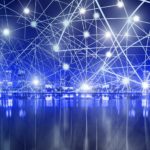Along with energy, water and waste, data has become an essential flow for the functioning of cities. But in a world where smart cities are growing, we are witnessing an explosion in data. The development of networks, big data and the IoT (Internet of Things) are at the heart of tomorrow’s intelligent and sustainable city. They enable better urban management and a finer analysis of the expectations of citizens and tourists thanks to real-time information, but also statistical and predictive analysis.
Open data: data open to everyone
What is open data?
It consists in publishing public data so that it can be used. This data is distributed in a structured way according to a method and a license open to all. It includes weather data (sunshine, rainfall, temperatures, etc.), public transport use and development, demographic data for a territory, cultural activities and events.
What are the challenges of data?
Counting pedestrian flows, parking management, monitoring merchants, etc. Local authorities rely on public data to revitalize their city centers. The challenge is to identify relevant data to make the area more attractive. In order to meet citizens’ expectations as effectively as possible, cities do not hesitate to use open data to improve their facilities and services. In particular, data can be used to better manage waste management, optimize costs or reduce CO2 production.
How is data positioned at the heart of the smart city?
The smart city represents a turning point in terms of mobility, energy and security. The smart city is a new concept of urban development. It is about improving the quality of life of city dwellers by making the city more adaptive and efficient using new technologies based on an ecosystem of objects and services. This new way of managing cities includes: public infrastructure, networks, transportation, services, administrations… No smart city without data. The smart city is made up of a continuous flow of data. But mastering urban data is at the heart of the challenges of the smart city. Since the law for a Digital Republic of 2016, local authorities with more than 3,500 inhabitants have been required to publish data of economic, social, environmental or health-related interest in an open and usable format.
For data to create value and economic development, it must be “usable” and valued. It must be at the service of citizens and not be too intrusive. Data can come from a community, a public service, a citizen group or a company. They can be used by all without technical, legal or financial conditions. It is used in many sectors: transportation, geography, cartography, the environment or justice.
So the data is a real added value for cities. But before they can be used, they must first be collected! IoT sensors are used for this. More details on these sensors in the next article.






